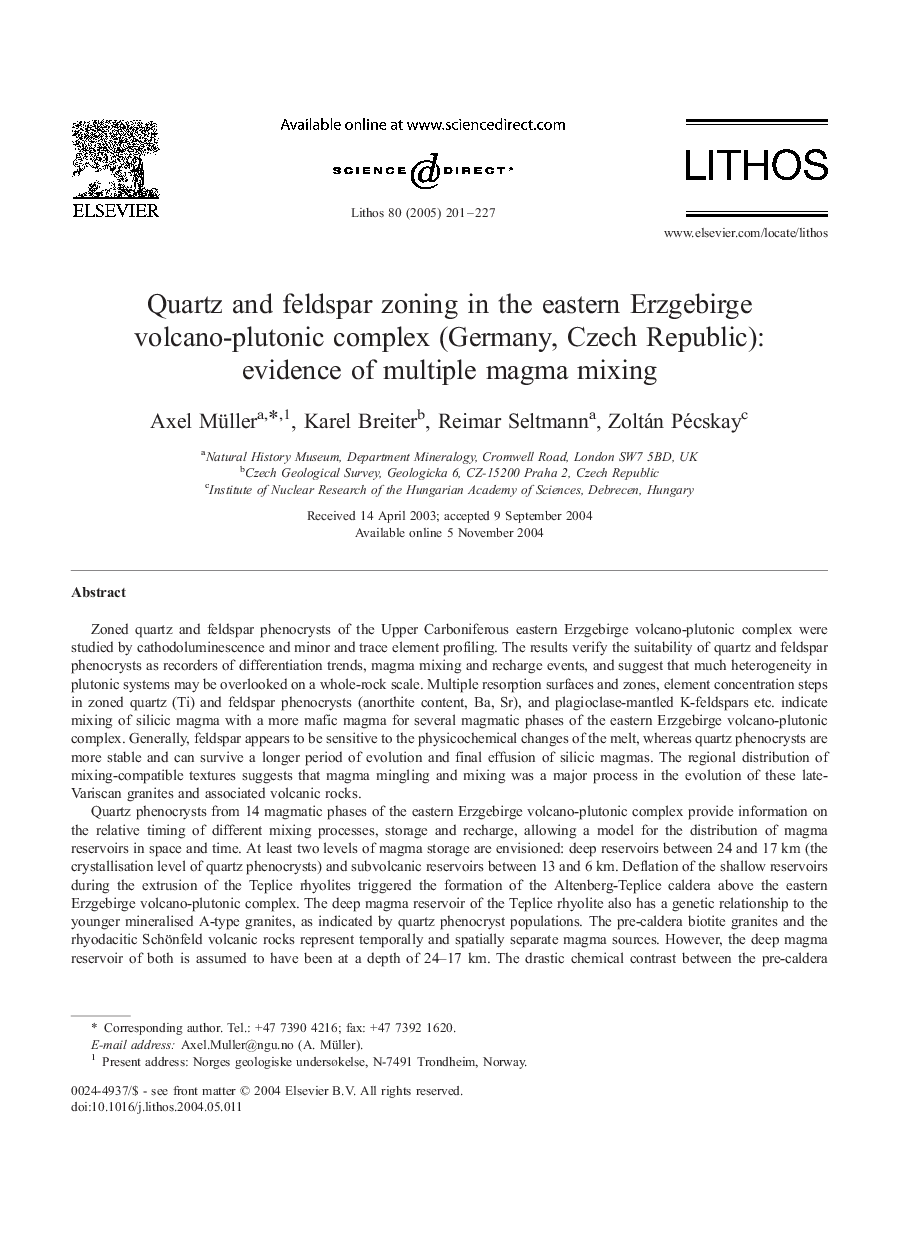| Article ID | Journal | Published Year | Pages | File Type |
|---|---|---|---|---|
| 9532105 | Lithos | 2005 | 27 Pages |
Abstract
Quartz phenocrysts from 14 magmatic phases of the eastern Erzgebirge volcano-plutonic complex provide information on the relative timing of different mixing processes, storage and recharge, allowing a model for the distribution of magma reservoirs in space and time. At least two levels of magma storage are envisioned: deep reservoirs between 24 and 17 km (the crystallisation level of quartz phenocrysts) and subvolcanic reservoirs between 13 and 6 km. Deflation of the shallow reservoirs during the extrusion of the Teplice rhyolites triggered the formation of the Altenberg-Teplice caldera above the eastern Erzgebirge volcano-plutonic complex. The deep magma reservoir of the Teplice rhyolite also has a genetic relationship to the younger mineralised A-type granites, as indicated by quartz phenocryst populations. The pre-caldera biotite granites and the rhyodacitic Schönfeld volcanic rocks represent temporally and spatially separate magma sources. However, the deep magma reservoir of both is assumed to have been at a depth of 24-17 km. The drastic chemical contrast between the pre-caldera Schönfeld (Westfalian B-C) and the syn-caldera Teplice (Westfalian C-D) volcanic rocks is related to the change from late-orogenic geotectonic environment to post-orogenic faulting, and is considered an important chronostratigraphic marker.
Related Topics
Physical Sciences and Engineering
Earth and Planetary Sciences
Geochemistry and Petrology
Authors
Axel Müller, Karel Breiter, Reimar Seltmann, Zoltán Pécskay,
